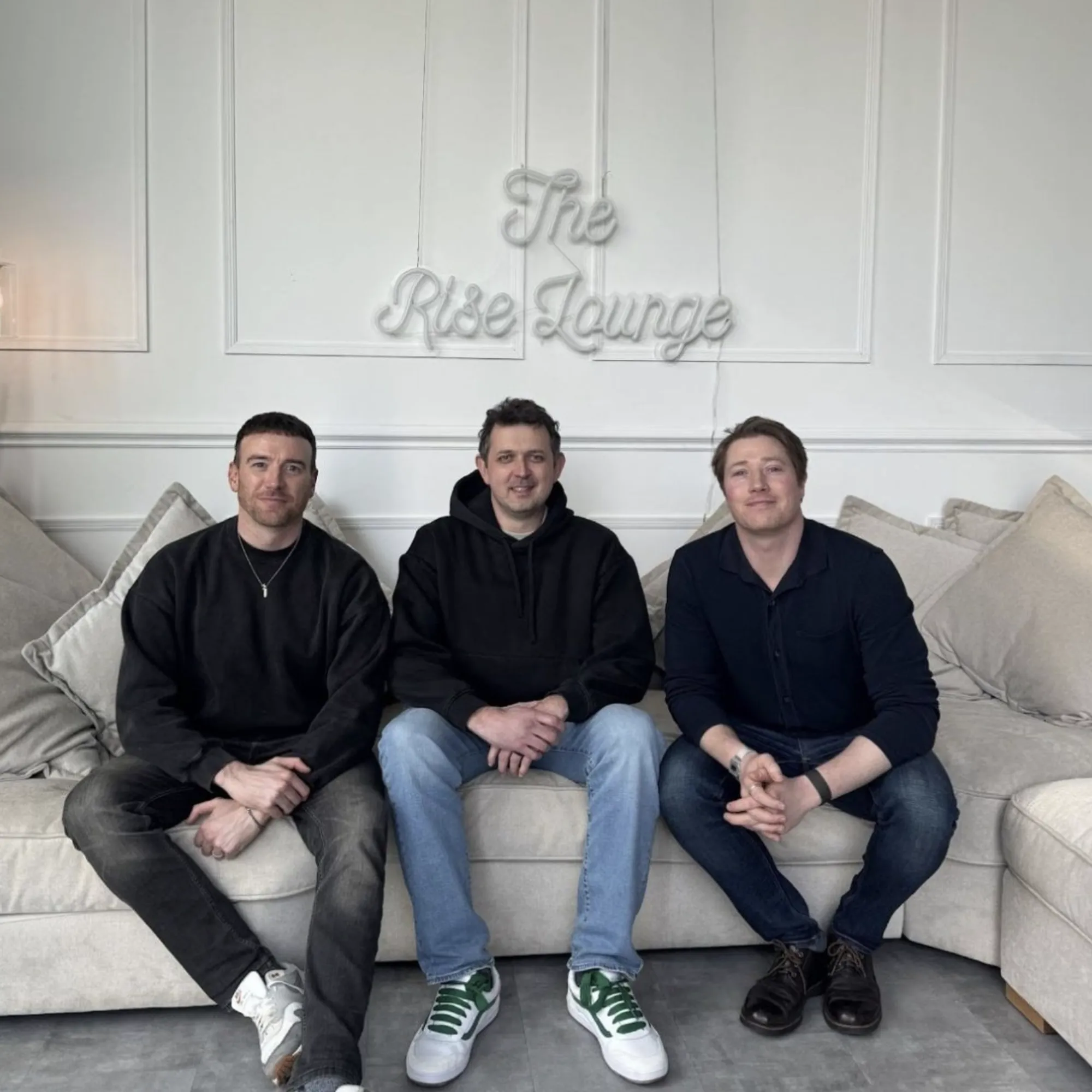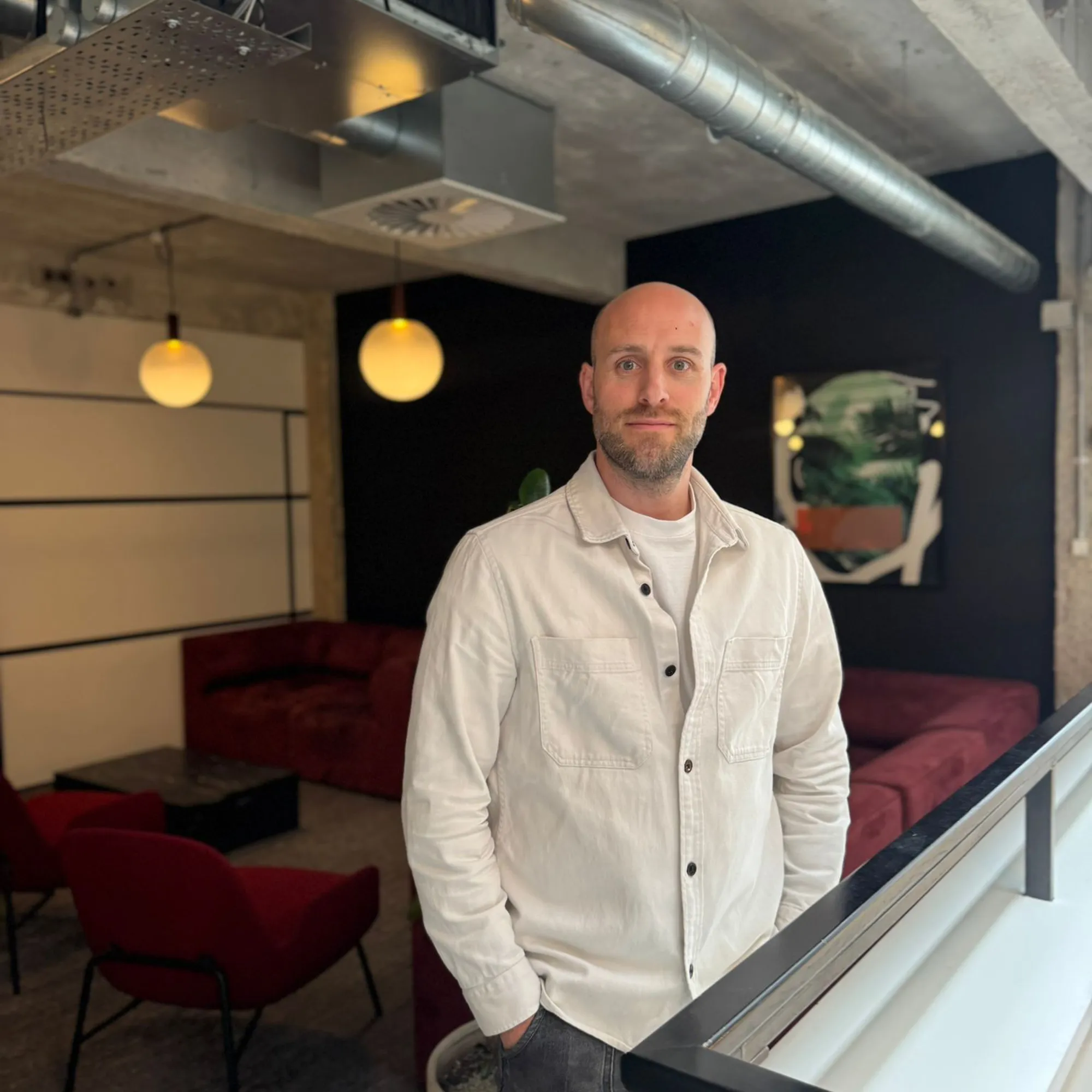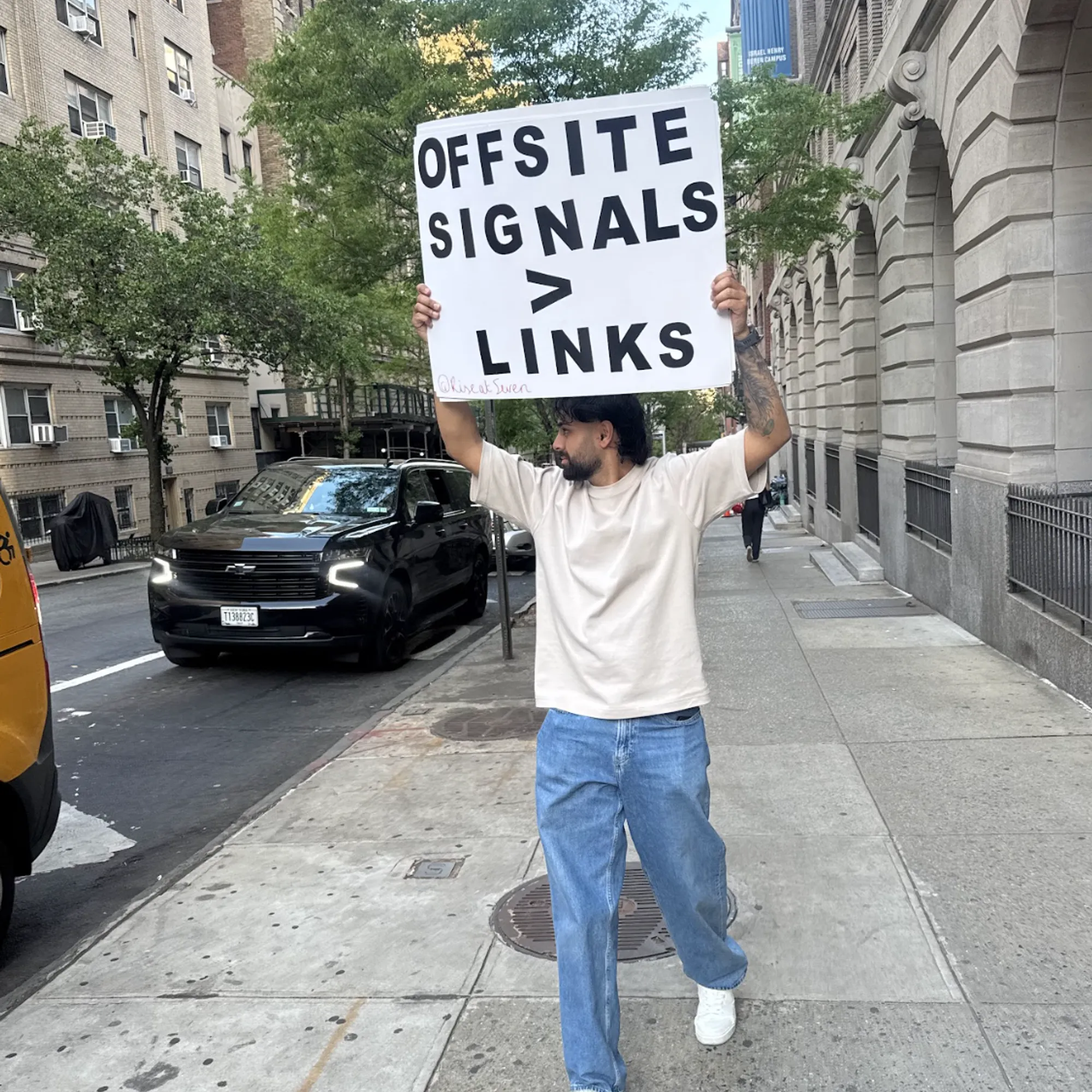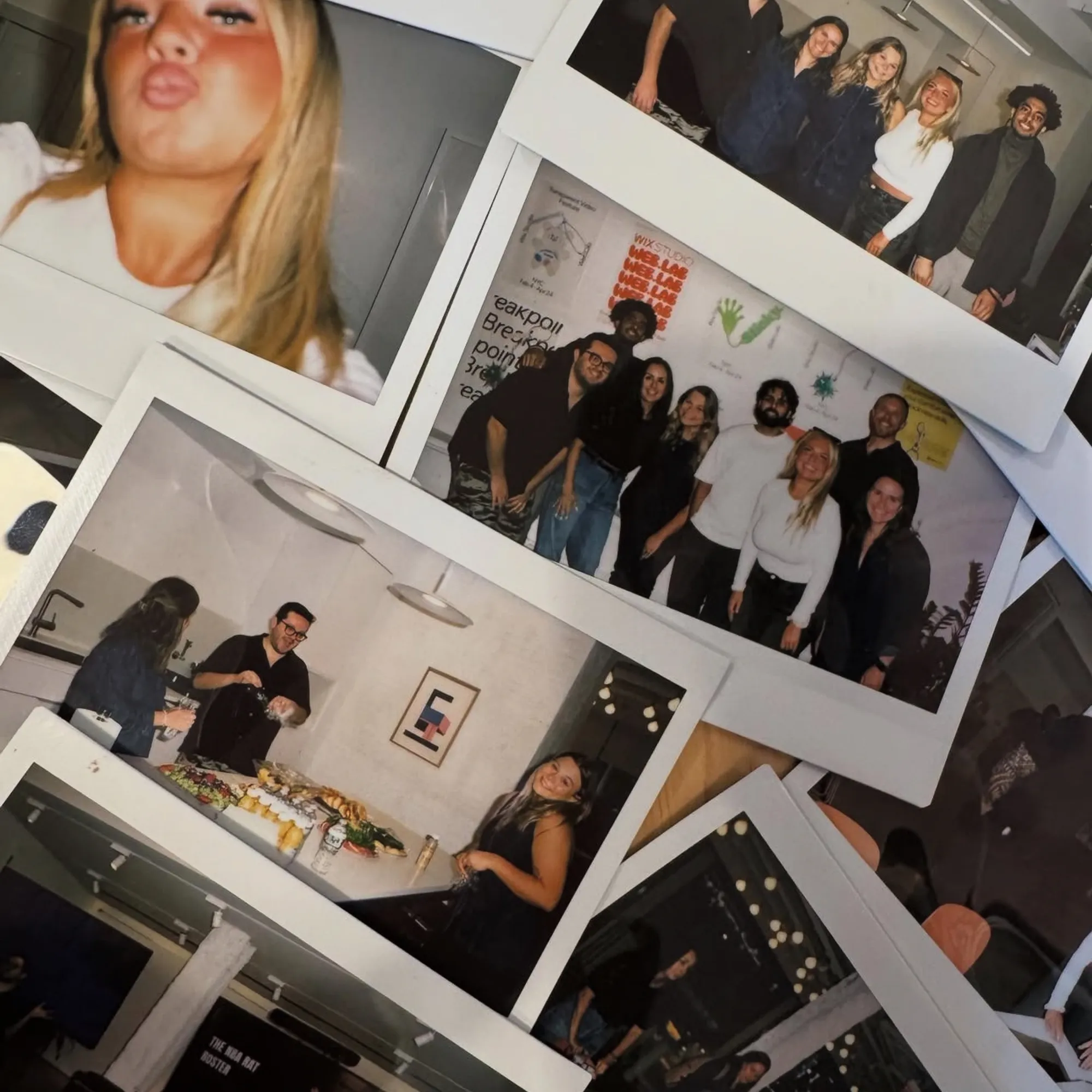
How To Build Cross-platform Content Strategies That Generate Serious ROI
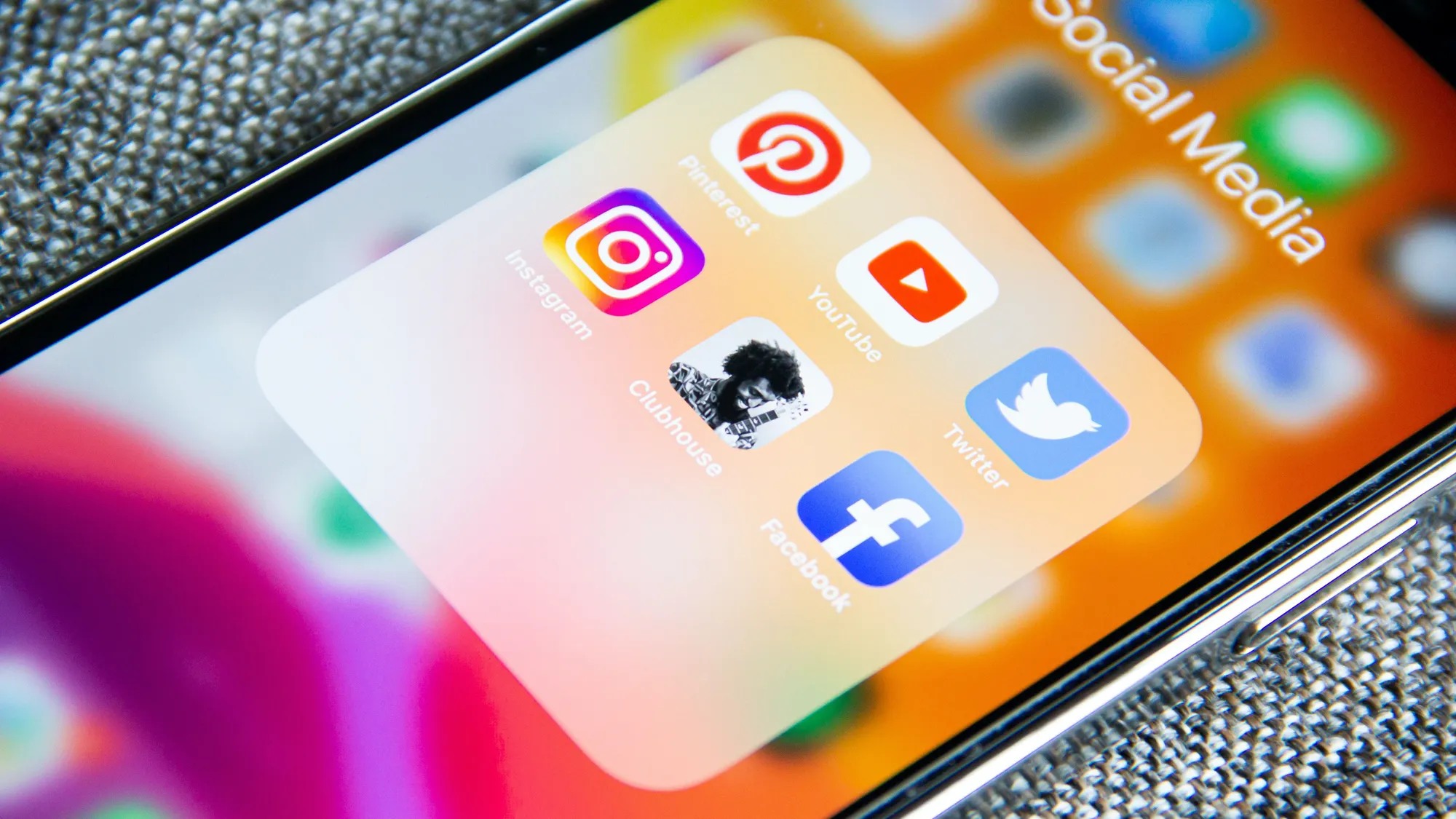
Right now, content moves faster than ever.
Gen Z and Gen X are controlling the narrative. They get to determine the success of creators and businesses alike.
The creator economy no longer sits on a single platform like it used to.
YouTube creators are publishing to TikTok. Traditional journalists now use X threads for news.
Attention is fluid.
Before (most of us) would use Google or YouTube to do our research and make purchases.
Now, the average consumer relies on people and word of mouth to make buying decisions. Consumers are savvy. They know when they’re being sold to, so the traditional way of capturing attention no longer works.
And because attention is hard to keep, creators are becoming platform agnostic.
This means search behaviour is highly dynamic.
We see declining search volumes on Google, while TikTok and Instagram are trending. This isn’t happening in isolation.
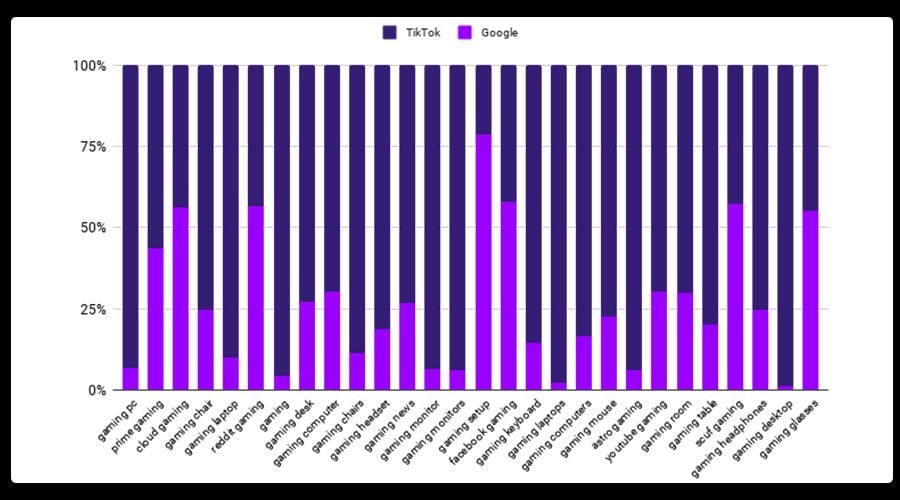
It’s happening at scale.
Our Northstar at Rise is capturing that attention and turning that attention into revenue.
Now I’ll show you what we think about that.
How to capture (and keep) attention
The key part of generating meaningful attention is to master the art of audience research.
And by this, I don’t mean collecting data from GA4.
Your audience engages with content differently depending on the platform they’re on. It’s your job as a professional to understand this behaviour.
To convert awareness into sales, discovery and motivation are two core areas to focus on.
- How do people discover new brands? What mediums?
- What content (specifically) do they consume?
- When does that content type trend?
- What’s the lifecycle of that content type and topic?
- How long do they spend on each platform?
Once you have a deep understanding of who your audience is, you can begin to overlay search data.
“Spend your budget where your customers spend their time” - Carrie Rose
If you know that your audience spends 65% of their time on Reddit, 20% of their time on YouTube, and 15% on TikTok, you can produce the right content exactly at the right time.
Search tells us exactly what our users want, not what we think they want.
The next layer of this is identifying the lifecycle of each piece of content, depending on the platform.
How does the content lifecycle work?
Each piece of content we produce has an expiry date.
The word ‘evergreen’ gets thrown around a lot. But I don’t think anything lasts forever.
Eventually, consumers change. That 4,000-word travel guide to Santorini is now a 90-second TikTok.
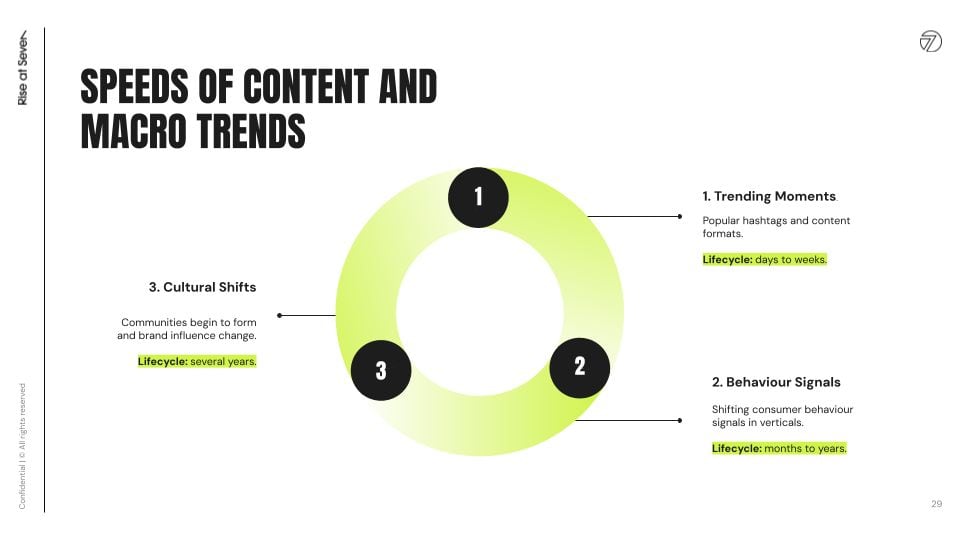
It’s the ignorance of this happening that kills most content marketing campaigns.
Our job isn’t to produce more content to offer a deliverable. It’s to cross-promote. It’s to repurpose and distribute content while the lifecycle still exists.
There are three core determining lifecycles (in my opinion) that content marketers should pay attention to.
- Trending moments.
- Consumer signals.
- Macro trends.
And each has a rough lifecycle that we plan for.
Examples of micro shifts
I define trending moments as micro shifts in consumer behaviour.
Content types, popular hashtags, memes: these micro shifts in behaviour usually have a lifecycle of a few weeks to a month.
Trending moments are short-lived but can be incredibly useful for awareness. Popularity is never a bad thing.
The problem is that most brands jump on trends at the tail of their peak. They’re too late. They take too long to produce content because they’re more concerned with storyboards, scripts, and edits.
Instead of focusing on publishing.
To effectively capitalise on trends, you need to see them coming before they reach their maximum potential.
That’s where platform data, audience insights and search data can play a huge role in forecasting where attention is and how long it will stay.
Examples of macro
Macro trends are fundamental changes in how users find and consume content.
These trends are typically either driven by platform or community.
Reddit is an amazing example of this. If we cast our minds back to the GameStop story, it shows us how powerful communities can be.
This adoption will be sustained for years to come. It resets how users think about content.
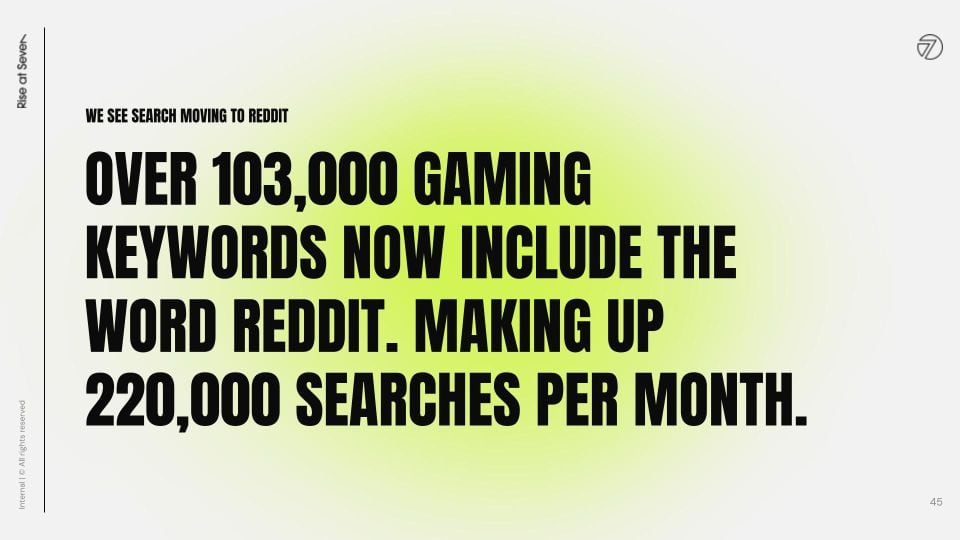
The best way to identify this is by paying attention to declining search volumes within search but increasing post volumes across all other channels.
Plotting that over a month-by-month graph allows you to spot noticeable changes in user behaviour that indicate where your users are going.
Learning to compare cross-platform trends
How we used to find keywords still plays a major role in our ability to find cross-platform opportunities.
We look across:
- TikTok
- YouTube
Traditional keyword research methods still apply.
Remembering that we’ll only focus on the core channels, we know our audience spends their time.
(I’m not going to show you how to do keyword research, but feel free to check out Ahref’s or Semrush’s guide).
The money is in categorising your keywords by channel, theme, and intent.
We want to know what will be our awareness channels and what could be used for conversions.
We aim to:
- Segment opportunity by market share.
- Compare the total opportunity by channel.
- Review content types by channel.
- Plan a value matrix based on the platform.
- Execution strategy.
Our goal is to use as many channels as possible, with varying levels of lifecycles, to push people into our sales funnel.
This could be onsite purchases or data capture. The idea is to generate attention and keep it.
We don’t want to make recommendations that our clients cannot execute.
It makes the entire process worthless.
That’s why we map the entire opportunity to a content value matrix. It gives brands options and the understanding of what’s possible now vs. what’s possible in the future.
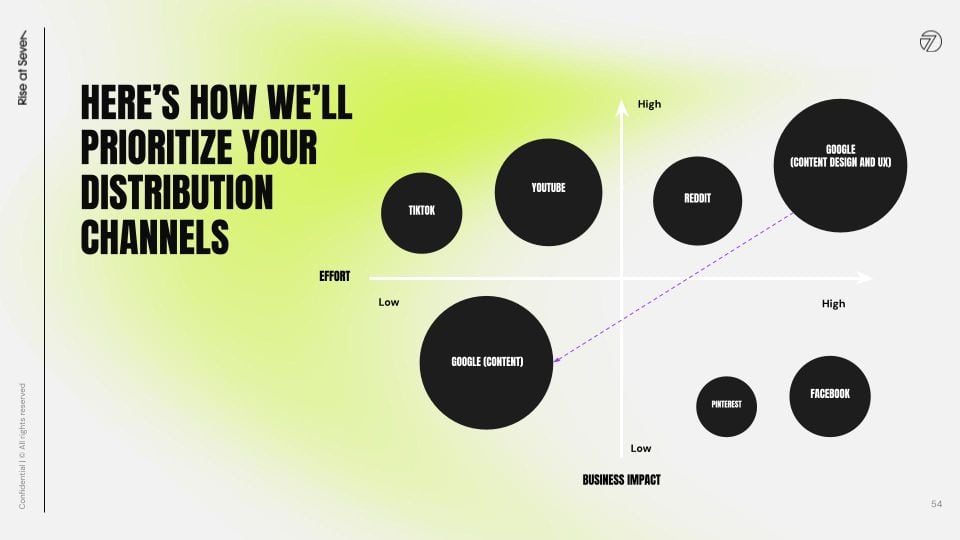
Platform trends are the key to successful marketing
We pay so much attention to when a topic begins to decline on one platform, and another takes over.
In a recent analysis we did for Super Mario Brows, we found that Google was being used as the news source.
Right up until the point the game was officially announced.
At this point, TikTok and content creators took over.
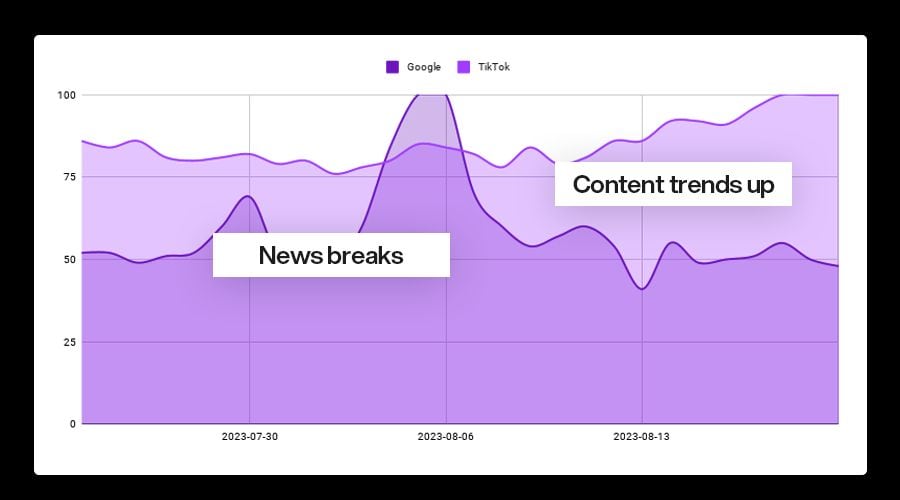
Chart showing Google and TikTok trends for Super Mario Bros
We use this data to transition away from wasted or decaying ROI. Too many SEOs spend months (or years) fighting for real estate on the SERPs.
A SERP heavily saturated with AI features, sponsored ads, and hundreds of other big-budget brands spending more money than you to absorb the click.
That model is broken.
The economics don’t work.
Take the same time and money and diversify to capture attention more freely.
If you notice that CTR is dropping for a group of keywords (but your average position hasn’t changed), the chances are consumer behaviour is changing.
We have countless instances of this happening. Google is used for the initial news source, and then users move to their favoured platform to continue consuming content.
It makes PR so powerful.
PR will capture that initial exploration of news.
Google can grab longer-term commercial content.
TikTok will support shorter-term content consumption.
Email will support the LTV.
Here’s how we bring it all together
The greatest disappointment of any strategy is the lack of cohesion.
You won’t enjoy the full benefit of your strategy if you have marketing channels working in isolation.
It makes us (Rise) so good at what we do.
We bring everything together.
PR supports onsite content. Onsite content supports data capture. Data capture is used to distribute content series.
It’s a real flywheel of content that we create.
The idea is to create mass on the internet. To have so much of a gravitational pull from combined efforts, each channel culminates in an action.
The short-lived micro-moments should support the longevity of more sustainable content types.
This supplementary ROI timeline works in tandem with our longer-term goals. But we know that peak is enough to pull attention into longer cycles. That’s the magic.
That’s the secret sauce nobody tells you about.
That’s how you get serious ROI from your content marketing.

